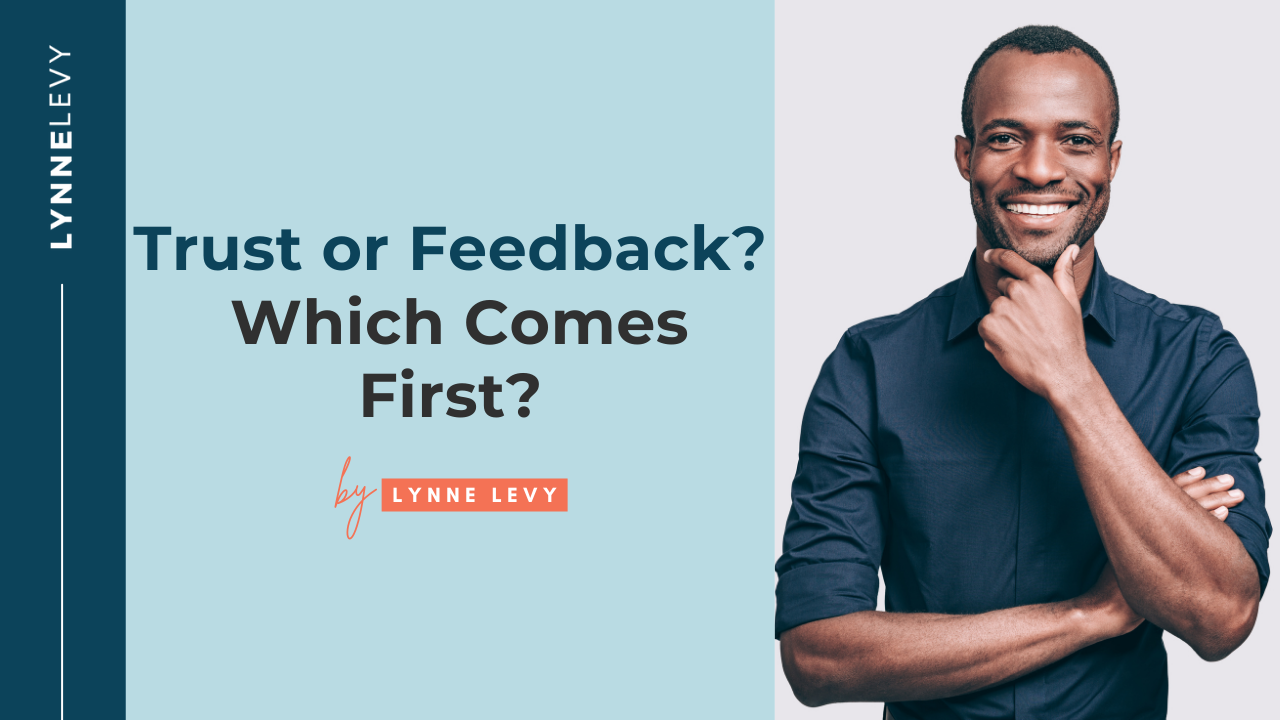Trust or Feedback. Which Comes First?
Sep 01, 2021
Think about an inspiring leader from your past – a leader who inspired you to do your best work. My guess is they could give you constructive feedback, and you would take that feedback as a gift and make necessary changes. You may not have enjoyed receiving the feedback, but you could hear what they had to say and carefully consider it. You knew they had your best interests in mind. You trusted their motives.
Many managers struggle with giving constructive feedback because of a lack of trust. When trust is absent, a manager ends up glossing over feedback and an employee might get defensive and/or ignore the feedback. Trust must be built for constructive feedback to be effective.
Here are six things managers can do to build trust and enable feedback to be a learning experience.
- Lead with positivity.
The most fundamental way to build trust with employees is to connect with them. As the number of positive interactions managers have with their employees increases, the more trust grows. Research shows there should be three positive interactions with an employee before constructive feedback can be a learning experience.
These positive interactions include:
- Recognizing good work
- Brainstorming/problem solving
- Giving employees a voice
- Helping employees set goals
- Connecting with employees at a human level
Build more positivity with Social Recognition®.
- Pull versus push.
The push method of feedback is when the giver of feedback decides what the employee needs to learn and then pushes it to them. If the receiver resists or the feedback fails, the giver pushes more or in other directions.
The pull method of feedback is when leaders take more of a coaching, teaching, and developmental approach. Pulling is about setting positive expectations and showing employees that you believe improvements can be made. When managers set positive expectations with a coaching mindset, trust and connection grow.
One way to driving a coaching conversation is through guided check-ins, which focus on learning and growth by asking specific, open-ended questions. Help managers become better coaches with Conversations®.
- Create a safe environment.
By encouraging employees to be comfortable learning and making mistakes, trust and connection increase. This enables people to generate more ideas and collaborate more; feedback just becomes part of the routine of work. In a safe environment, feedback is an opportunity to grow. Managers must set the expectation that they will give both positive and negative feedback when appropriate because they want their employees to succeed.
- Get in the right mindset.
There’s a difference between feedback and blowback. Feedback is information intended to help another person learn. Blowback is used to hurt and wound. If an employee has let a manager down or has performed poorly, and the manager feels angry, the feedback will come across as punitive. If you find yourself about to give blowback as part of an angry moment, try to deal with your own emotions before engaging in any sort of dialogue.
- Model vulnerability.
When managers give feedback from a place of vulnerability, this increases trust and employees’ willingness to be open. Brené Brown writes that engaged, vulnerable feedback encompasses:
• Talking about similar mistakes you have made
• Acknowledging that you may not fully understand the issue
• Being willing to own your part in the challenge
When employees understand that feedback is not a personal attack, but a dialogue with their manager, collaboration and trust can grow.
- Demonstrate the value of feedback.
Leaders must model feedback by asking others for feedback and then taking action based on what they hear. Leaders should be open with their teams about what they are learning and what changes they have made. When leaders ask for feedback from their direct reports and then take action, employees feel valued and that their opinions matter.
Which comes first, trust or constructive feedback? The answer is simple: trust. To build an engaged workforce where people bring their whole selves to work each day, trust must be built into every interaction.


